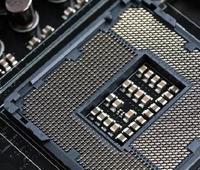Unlimited CPU Speed with Limited Memory: A Theoretical Computer
A theoretical computer with infinite CPU speed but only 1MB RAM presents fascinating possibilities in cryptography, computation, and quantum simulation, despite its apparent memory constraints.

The concept of a computer with unlimited processing speed but minimal memory opens up intriguing theoretical possibilities that challenge our understanding of computational limitations.
At first glance, 1MB of memory seems severely restrictive. However, this architecture’s unlimited CPU speed enables remarkable capabilities through clever algorithmic approaches. For instance, when calculating pi, while the entire sequence cannot be stored, the system can compute segments sequentially with instant speed, outputting results via USB.
In cryptography, this configuration becomes particularly powerful. Traditional cryptographic security relies on computational limitations rather than memory constraints. With infinite processing speed, the system could:
- Instantly break RSA encryption through rapid prime factorization
- Solve complex cryptographic challenges through brute-force approaches
- Render current asymmetric encryption methods obsolete
The system’s quantum simulation capabilities are equally remarkable. Despite memory limitations, the infinite processing speed allows for:
- Real-time simulation of quantum systems within cache-size constraints
- Sequential processing of larger quantum systems in manageable chunks
- Effective modeling of quantum behaviors without requiring massive parallel resources
The architecture’s implications extend to algorithmic computation. While 1MB limits simultaneous data storage, the system can:
- Process massive calculations in smaller segments
- Solve complex mathematical problems through sequential computation
- Handle intensive algorithms by breaking them into memory-sized chunks
Despite these capabilities, the system faces practical constraints. Data input/output becomes a bottleneck, as the USB transfer speed limits data exchange. Additionally, the mechanical hard drive-speed memory creates a significant performance barrier despite the CPU’s infinite speed.
The theoretical nature of this computer challenges fundamental assumptions about computational architecture. It demonstrates that processing power and memory capacity have distinct roles in determining a system’s capabilities, leading to unique solutions for complex computational problems.